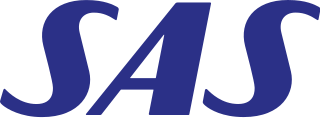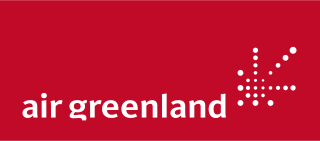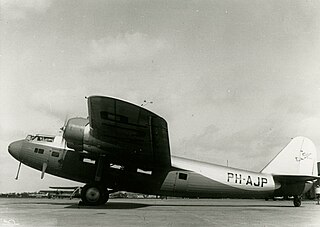
Scandinavian Airlines, more commonly known and styled as SAS, is the flag carrier of Denmark, Norway, and Sweden. SAS is an abbreviation of the company's full name, Scandinavian Airlines System or legally Scandinavian Airlines System Denmark-Norway-Sweden. Part of the SAS Group and headquartered at the SAS Frösundavik Office Building in Solna, Sweden, the airline operates 180 aircraft to 90 destinations. The airline's main hub is at Copenhagen-Kastrup Airport, with connections to 109 destinations around the world. Stockholm Arlanda Airport is the second largest hub, with Oslo Airport, Gardermoen being the third major hub of SAS. Minor hubs also exist at Bergen Airport, Flesland, Göteborg Landvetter Airport, Stavanger Airport, and Trondheim Airport. SAS Cargo is an independent, wholly owned subsidiary of Scandinavian Airlines and its main office is at Copenhagen Airport.

Copenhagen Airport, Kastrup is an international airport serving Copenhagen, Denmark, Zealand, the Øresund Region, and southern Sweden including Scania. In 2023 it is the largest airport in the Nordic countries.
Maersk Air A/S was a Danish airline which operated between 1969 and 2005. Owned by the A. P. Møller–Mærsk Group, it operated a mix of scheduled and chartered passenger and cargo services. Headquartered at Dragør, its main operating bases were Copenhagen Airport, Billund Airport and Esbjerg Airport. The airline had offshore helicopter operations from 1975 to 1999 and had three airline subsidiaries: Maersk Air UK, Maersk Commuter, and Star Air.

The Fokker F27 Friendship is a turboprop airliner developed and manufactured by the Dutch aircraft manufacturer Fokker. It is the most numerous post-war aircraft manufactured in the Netherlands; the F27 was also one of the most successful European airliners of its era.

The De Havilland Canada DHC-8, commonly known as the Dash 8, is a series of turboprop-powered regional airliners, introduced by de Havilland Canada (DHC) in 1984. DHC was bought by Boeing in 1986, then by Bombardier in 1992, then by Longview Aviation Capital in 2019; Longview revived the De Havilland Canada brand. Powered by two Pratt & Whitney Canada PW150s, it was developed from the Dash 7 with improved cruise performance and lower operational costs, but without STOL performance. The Dash 8 was offered in three sizes: the initial Series 100 (1984-2005) and the more powerful Series 200 (1995-2009) with 37-40 seats, the Series 300 (1989-2009) with 50-56 seats, and Series 400 (1999-Present) with 68-90 seats. The QSeries are post-1997 variants fitted with active noise control systems.

The Vickers VC.1 Viking is a British twin-engine short-range airliner derived from the Vickers Wellington bomber and built by Vickers-Armstrongs Limited at Brooklands near Weybridge in Surrey. After the Second World War, the Viking was an important airliner with British airlines, pending the development of turboprop aircraft like the Viscount. An experimental airframe was fitted with Rolls-Royce Nene turbojets and first flown in 1948 as the world's first pure jet transport aircraft. Military developments were the Vickers Valetta and the Vickers Varsity.

Air Greenland A/S, also known as Greenlandair, is the flag carrier of Greenland, owned by the Greenlandic Government. It operates a fleet of 28 aircraft, including 2 airliners used for transatlantic and charter flights, 8 fixed-wing aircraft primarily serving the domestic network, and 18 helicopters feeding passengers from the smaller communities into the domestic airport network. Flights to heliports in the remote settlements are operated on contract with the government of Greenland.

SAS AB, trading as SAS Group, is an airline holding company headquartered in the SAS Frösundavik Office Building in Solna Municipality, Sweden. It is the owner of the airlines Scandinavian Airlines and SAS Connect. SAS once owned 19.9% of the now defunct Spanish airline Spanair as well as shares in Estonian Air and Skyways Express. SAS Group is partially owned by the governments of Sweden and Denmark with a 14.82% and 14.24% holding, respectively. The remaining 70.92% is held by private shareholders, of which Foundation Asset Management owns 6.50%. The company is listed on the Oslo Stock Exchange, the Stockholm Stock Exchange, and the Copenhagen Stock Exchange.

Nigeria Airways Ltd., more commonly known as Nigeria Airways, was a Nigerian airline. The company was founded in 1958 after the dissolution of West African Airways Corporation (WAAC). It held the name West African Airways Corporation Nigeria until 1971, when it was rebranded to the name it had until it ceased operations in 2003. The government of Nigeria owned a majority of the airline (51%) until 1961, when it boosted its shareholding in the company to 100% and made it the country's flag carrier. At the time of dissolution, the airline's headquarters were at Airways House in Abuja. Operations were concentrated at Murtala Muhammed International Airport and served both domestic and international destinations mainly concentrated in West Africa; the network also had points in Europe, North America and Saudi Arabia. The airline was managed by a number of foreign companies, including British Airways, KLM and South African Airways.

Deutsche Luft Hansa A.G. was a German airline. It served as flag carrier of the country during the later years of the Weimar Republic and throughout Nazi Germany, when it had close links to the Nazi Party.
Maersk Air Cargo, formerly branded as Star Air, is a Danish cargo airline and part of Danish business conglomerate Maersk. It operates a fleet of 14 Boeing 767 cargo aircraft. Several of these are on contract to United Parcel Service (UPS) and operate out of Cologne Bonn Airport, Germany & East Midlands Airport, UK.Star Air is headquartered in Dragør, Denmark, at the premises of Copenhagen Airport.
Det Norske Luftfartselskap A/S or DNL, trading internationally as Norwegian Air Lines, was an airline and flag carrier of Norway. Founded in 1927, it operated domestic and international routes from 1935 to 1941 and from 1946 to 1951. It became one of the three founders of Scandinavian Airlines System (SAS) and became one of its three holding companies from 1951, with a 28% stake and listed on the Oslo Stock Exchange. DNL was renamed SAS Norge ASA in 1996 and was merged in 2001 to create the SAS Group.

Kristianstad Airport is a regional airport situated outside Kristianstad in Scania, Sweden.
Myanmar National Airlines, formerly Union of Burma Airways, Burma Airways, and Myanma Airways, is a state-owned airline and the flag carrier of Myanmar, based in Yangon. Founded in 1948, the airline operates scheduled services to all major domestic destinations and to regional destinations in Asia. Its main base is Yangon International Airport.

The Fokker F.XXII was a 1930s Dutch four-engined 22-passenger airliner designed and built by Fokker.

The Fokker F.III was a single-engined high-winged monoplane aircraft produced in the 1920s by the Dutch aircraft manufacturer Fokker. It could carry five passengers. The aircraft was also built under licence in Germany as the Fokker-Grulich F.III.












